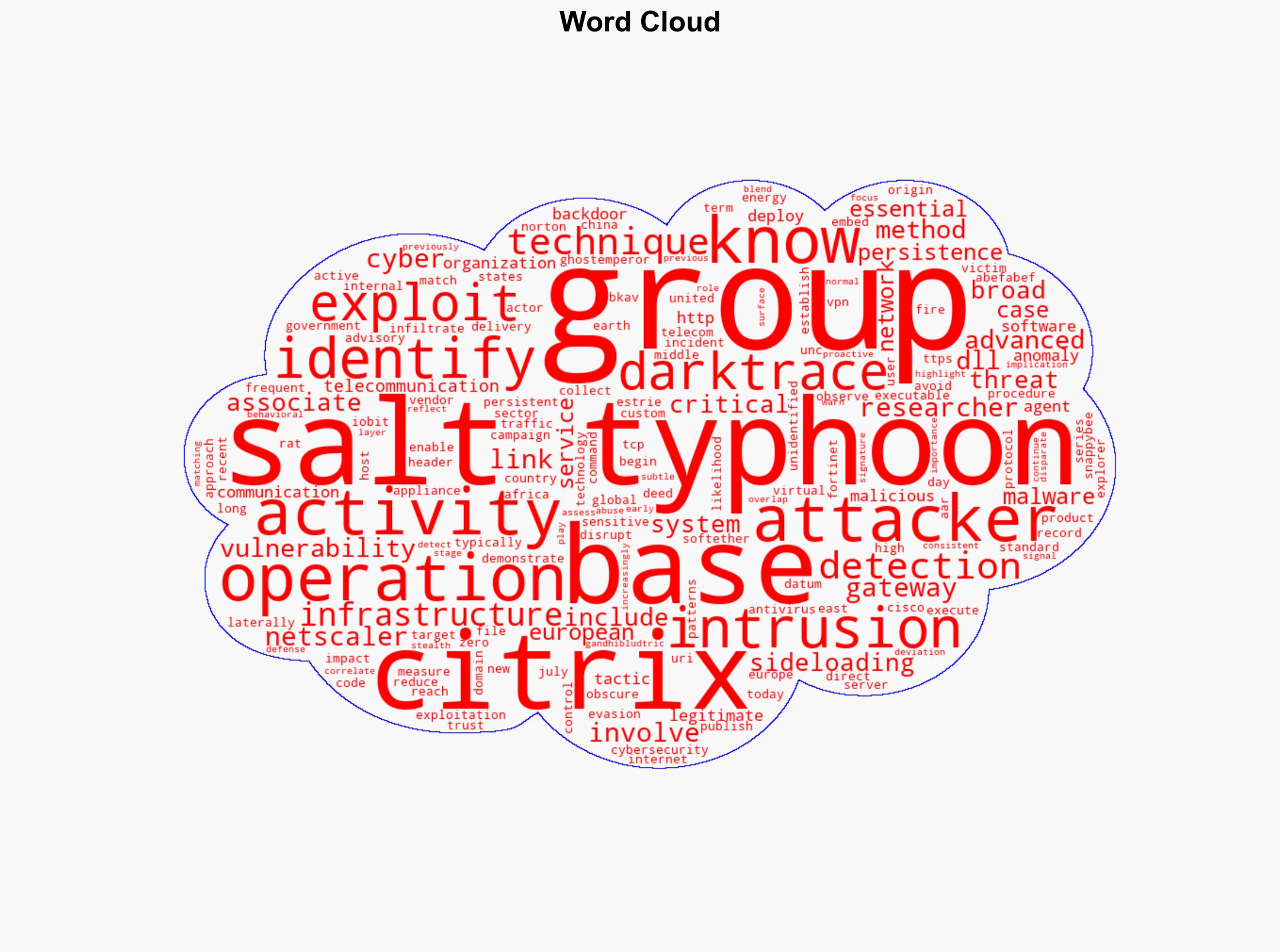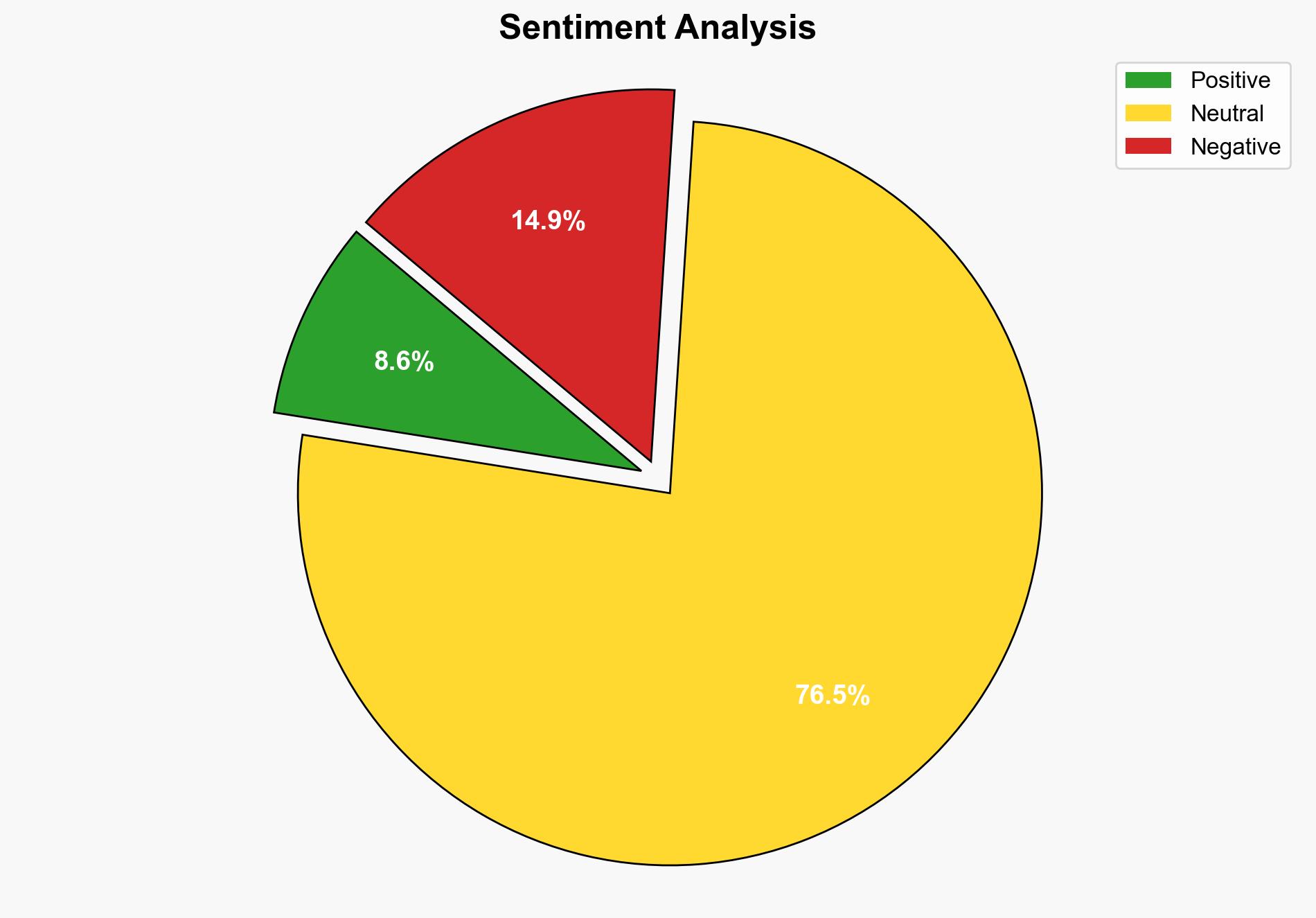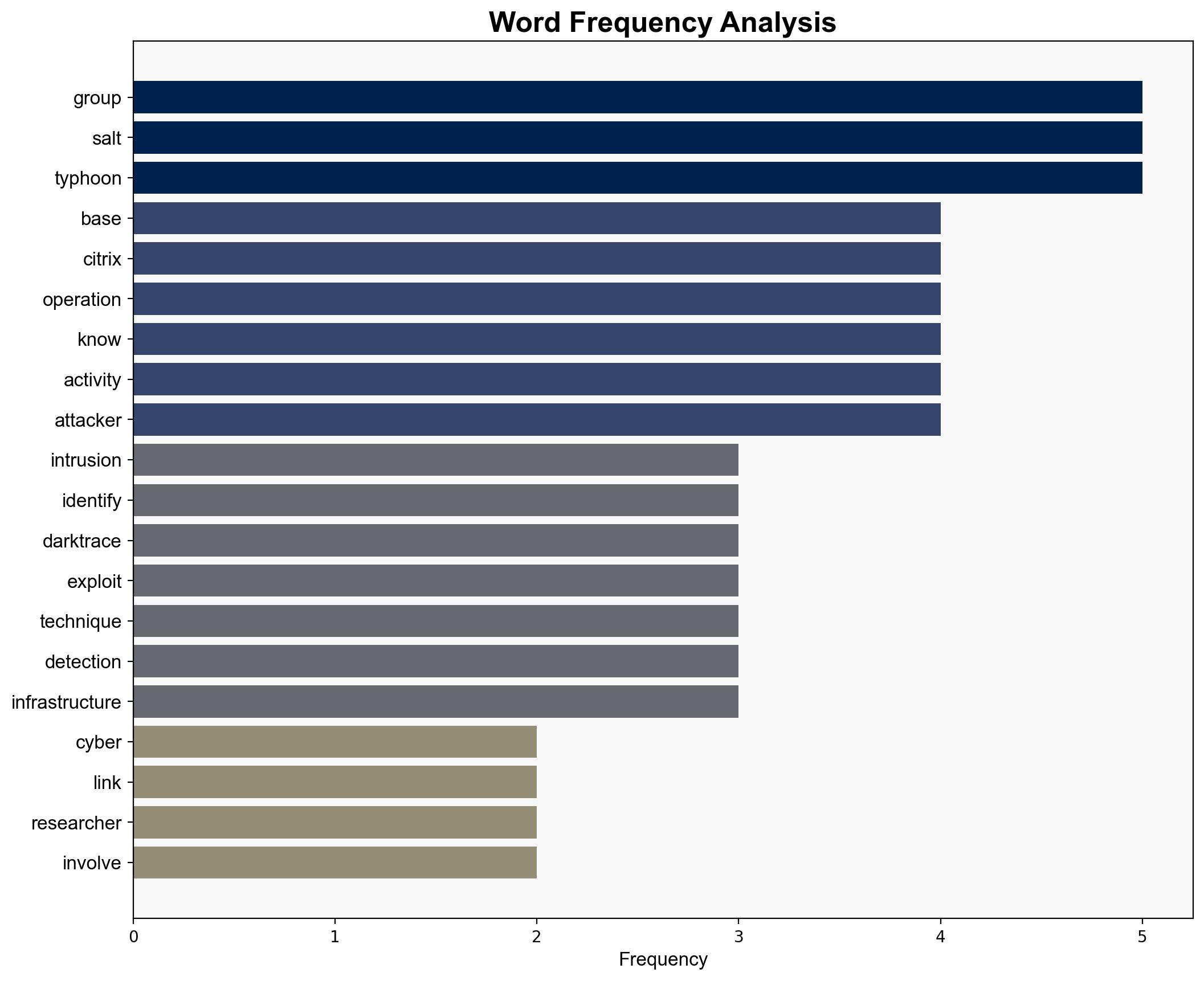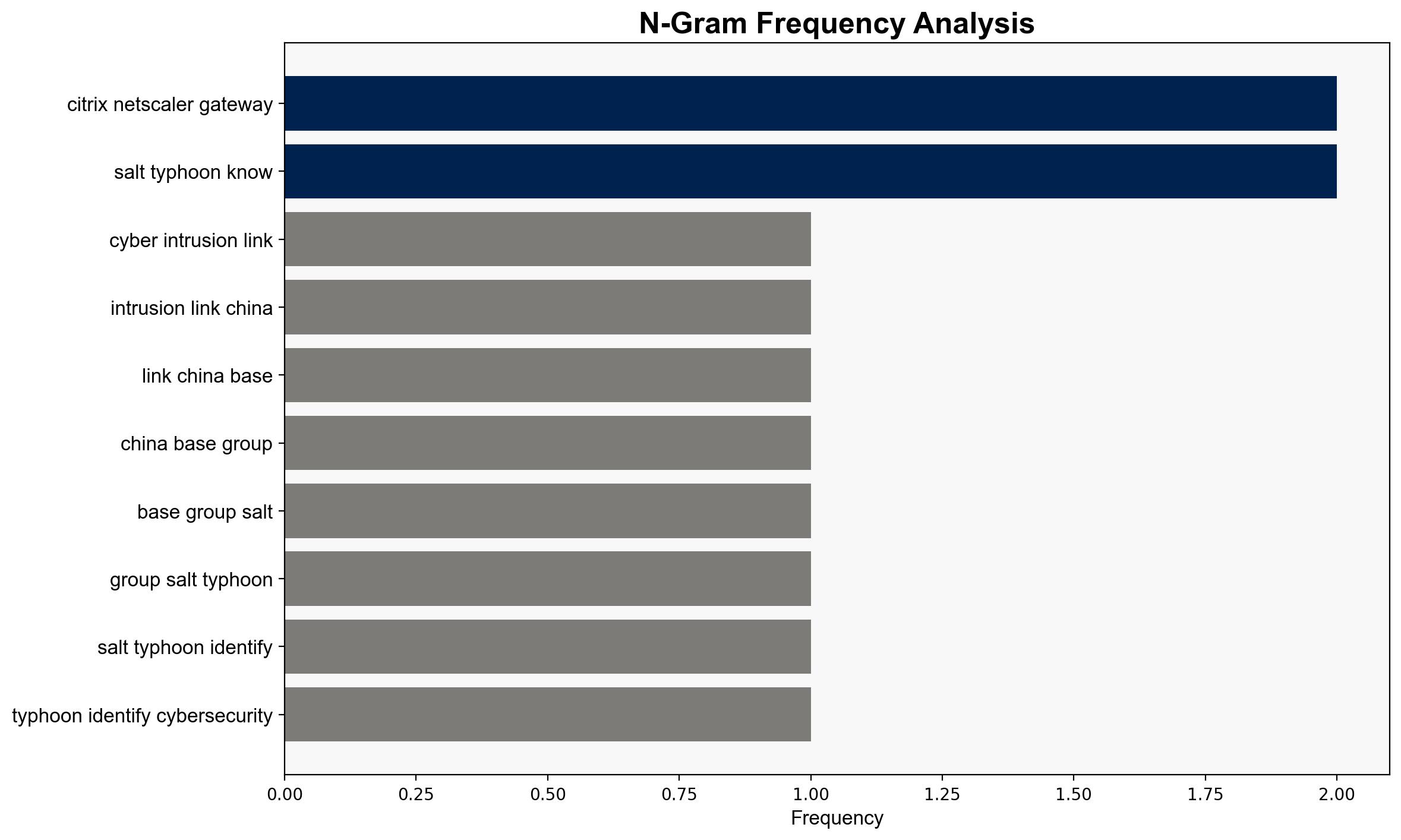Salt Typhoon Uses Citrix Flaw in Global Cyber-Attack – Infosecurity Magazine
Published on: 2025-10-20
Intelligence Report: Salt Typhoon Uses Citrix Flaw in Global Cyber-Attack – Infosecurity Magazine
1. BLUF (Bottom Line Up Front)
The most supported hypothesis is that Salt Typhoon, a China-based cyber threat group, is leveraging a Citrix vulnerability to conduct a sophisticated and persistent global cyber-attack campaign. This campaign targets critical sectors, including telecommunications and government systems, with advanced evasion techniques. Confidence in this hypothesis is high due to consistent TTPs and infrastructure overlap with previous Salt Typhoon operations. Recommended action includes enhancing anomaly-based detection systems and international collaboration to mitigate this threat.
2. Competing Hypotheses
1. **Hypothesis A**: Salt Typhoon is exploiting the Citrix vulnerability as part of a coordinated effort to infiltrate critical infrastructure globally, focusing on telecommunications and government sectors. This hypothesis is supported by the use of known Salt Typhoon TTPs, such as DLL sideloading and custom malware, as well as the group’s historical targeting patterns.
2. **Hypothesis B**: The cyber-attacks attributed to Salt Typhoon are actually the work of multiple threat actors using similar techniques and infrastructure, potentially as a false flag operation to mislead attribution efforts. This hypothesis considers the possibility of deception and the complexity of cyber attribution.
Using ACH 2.0, Hypothesis A is better supported due to the consistency of tactics, techniques, and procedures (TTPs) with known Salt Typhoon operations and the specific targeting of sectors previously associated with the group.
3. Key Assumptions and Red Flags
– **Assumptions**: It is assumed that the observed TTPs are unique to Salt Typhoon and that the infrastructure overlap is not coincidental.
– **Red Flags**: The possibility of a false flag operation or the involvement of multiple actors using similar methods could complicate attribution.
– **Blind Spots**: Limited visibility into the full scope of the campaign and potential undisclosed vulnerabilities being exploited.
4. Implications and Strategic Risks
The campaign poses significant risks to national security and economic stability, particularly if critical infrastructure is disrupted. The potential for cascading effects on global telecommunications and government operations is high. Geopolitically, this could escalate tensions between affected nations and China, especially if attribution is confirmed. The psychological impact includes increased fear and uncertainty regarding cyber vulnerabilities.
5. Recommendations and Outlook
- Enhance anomaly-based detection systems to identify subtle deviations indicative of advanced threats.
- Strengthen international collaboration to share intelligence and develop coordinated defense strategies.
- Scenario Projections:
- **Best Case**: Rapid identification and patching of vulnerabilities, minimizing impact.
- **Worst Case**: Prolonged infiltration leading to significant disruption of critical infrastructure.
- **Most Likely**: Continued targeted attacks with incremental improvements in detection and response capabilities.
6. Key Individuals and Entities
No specific individuals are mentioned in the intelligence. Entities include Salt Typhoon, Citrix, Fortinet, Cisco, and Darktrace.
7. Thematic Tags
national security threats, cybersecurity, counter-terrorism, regional focus





